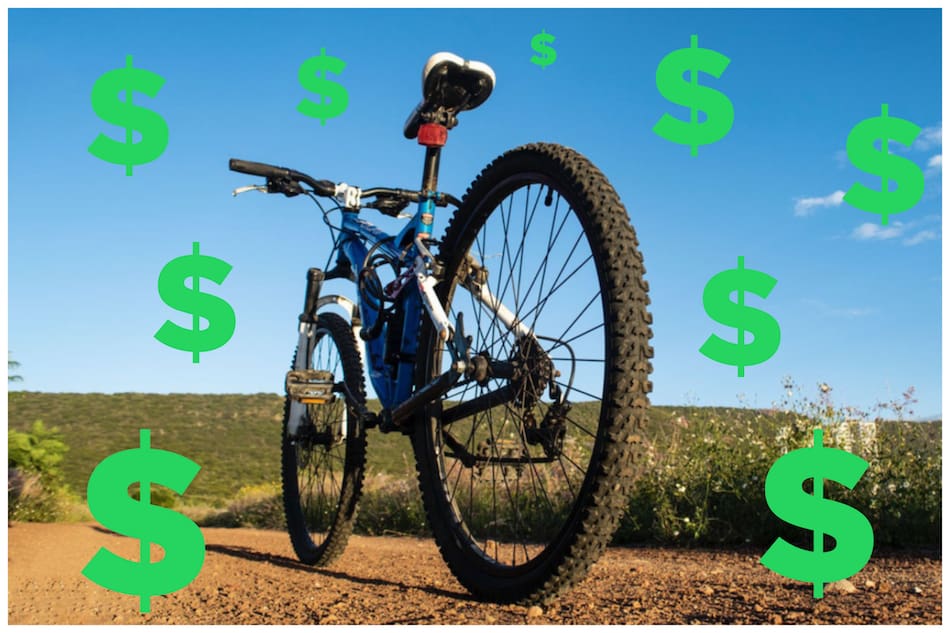


Why are mountain bikes so expensive. Mountain bikes can be expensive for various reasons.
Related: Why are gravel bikes so expensive
Let’s delve into the details of why they come with a higher price tag:
High-Quality Materials:
Mountain bikes are constructed using durable and lightweight materials like carbon fiber, titanium, and high-grade aluminum. These materials enhance performance and reduce weight, but they come at a premium cost.
Advanced Technology:
Modern mountain bikes feature cutting-edge technology, such as advanced suspension systems, hydraulic disc brakes, and electronic shifting. These components require research, development, and precision manufacturing, contributing to the overall cost.
Specialized Components:
Mountain bikes require specialized components to handle rough terrains, such as knobby tires, wide handlebars, and strong rims. These components are often custom-made, making them more expensive.
Brand Reputation:
Established brands with a reputation for quality and performance often command higher prices. Consumers are willing to pay more for assurance in the product’s reliability and support.
Design and Innovation:
Innovative frame designs and features that enhance performance and comfort can increase the cost. Brands invest in design and engineering to create unique products, leading to higher prices.
Demand for Performance:
Mountain biking is a popular sport, and enthusiasts demand bikes that can handle challenging trails. The demand for high-performance bikes justifies a higher price point.
Production Costs:
Craftsmanship, attention to detail, and stringent quality control increase production costs. Manufacturers ensure that each bike is built to exacting standards, contributing to the higher price.
Despite the expense, investing in a quality mountain bike ensures a durable, efficient, and enjoyable riding experience for years to come.
High-Quality Materials and Construction
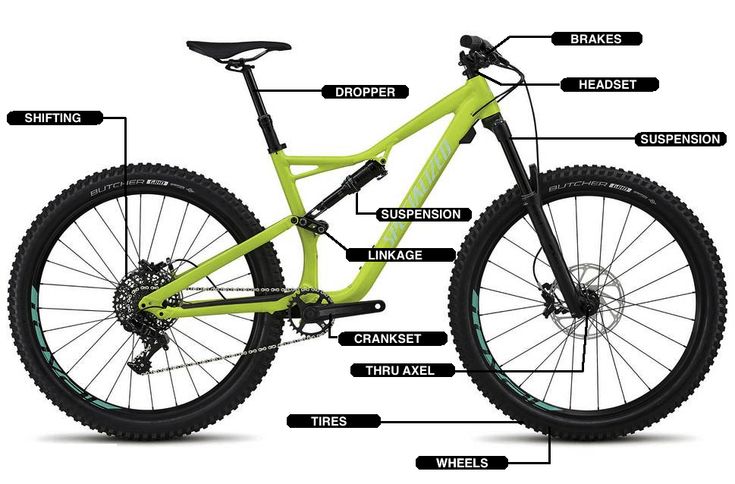


High-quality materials and construction are one of the primary reasons why mountain bikes can be expensive.
Read More : ” Is Cycling Harmful For Knees? “
Manufacturers use premium materials like carbon fiber, titanium, or high-grade aluminum to create lightweight yet durable frames. These materials offer excellent strength-to-weight ratios, ensuring a sturdy and responsive ride.
The construction process involves precision engineering and meticulous attention to detail, resulting in a well-crafted frame and components. Advanced welding techniques and innovative designs contribute to the overall cost.
Additionally, expensive mountain bikes often undergo rigorous testing to ensure they can withstand the demanding conditions of off-road trails.
High-quality components, such as top-tier suspension systems, drivetrains, brakes, and wheels, further add to the cost. These components enhance the bike’s performance and longevity, providing a smoother and more efficient ride on rough terrains.
While the use of high-quality materials and construction methods may increase the price of mountain bikes.
It also guarantees better performance, increased durability, and an overall superior riding experience, making them worth the investment for serious enthusiasts and professional riders.
Advanced Technology and Components



Advanced technology and components are another significant factor contributing to the high cost of mountain bikes. As the sport of mountain biking has evolved, so too have the technologies used in bike design and manufacturing.
Read More : ” Hybrid VS MTB Cycle “
Manufacturers continuously invest in research and development to create cutting-edge technologies that improve performance, safety, and rider experience.
One area where advanced technology is evident is in suspension systems. High-end mountain bikes often feature sophisticated suspension forks and rear shocks that offer better control, increased travel, and improved damping.
These systems enhance the bike’s ability to handle rough terrains and absorb impacts, providing a smoother and more comfortable ride.
Additionally, mountain bikes now come with advanced drivetrain components, such as electronic shifting systems and wide-range cassettes.
These advancements offer precise and smooth gear shifting, making it easier for riders to tackle various trail conditions and inclines.
Furthermore, the development of lightweight and robust materials has revolutionized mountain bike components.
Carbon fiber frames, handlebars, and seat posts, as well as high-performance alloy rims, reduce weight while maintaining strength and durability. This not only improves the bike’s performance but also enhances the rider’s overall experience.
Moreover, advancements in frame geometry and design have led to more agile and responsive bikes, allowing riders to maneuver through challenging terrain with greater control and confidence.
While the incorporation of advanced technology and components may increase the price of mountain bikes, it also elevates their performance and capabilities, making them a preferred choice for enthusiasts and professionals looking to push their limits on the trails.
Specialized Features for Rough Terrains
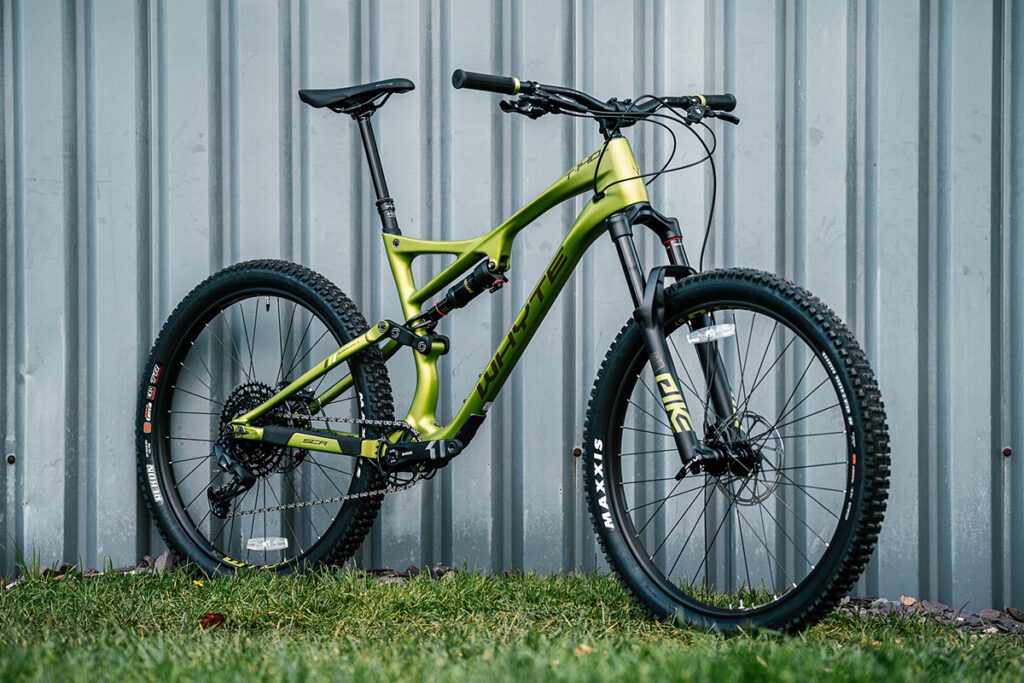


“Specialized features for rough terrains” refer to the specific design elements and components that mountain bike manufacturers incorporate to enhance the bike’s performance and durability on challenging off-road trails.
Read More : ” How To Clean A Mountain Bike? “
These features are essential for providing riders with a smooth and controlled experience while navigating through rugged and uneven terrains.
Suspension System:
Mountain bikes are equipped with suspension forks and rear shocks to absorb shocks and impacts encountered on rough terrains.
These systems provide increased travel and adjustability, allowing riders to fine-tune their suspension settings based on the trail conditions and their preferences.
Knobby Tires:
Mountain bikes have wide and knobby tires that offer excellent traction on loose surfaces like gravel, mud, and rocks. The deep treads provide grip, stability, and control, enabling riders to maintain traction even in challenging conditions.
Strong and Durable Frames:
Mountain bike frames are constructed using robust materials like aluminum or carbon fiber.
These materials provide strength and durability to withstand the rigors of off-road riding, ensuring the frame can handle impacts and stresses encountered on rough terrains.
Disc Brakes:
Most mountain bikes are equipped with disc brakes, which offer superior stopping power and modulation, especially in wet and muddy conditions. This enhances safety and control when riding down steep descents or navigating technical sections.
Wide Handlebars:
Wide handlebars provide more leverage and control, giving riders greater stability and responsiveness when riding on uneven trails.
Dropper Seatposts:
Many mountain bikes feature dropper seatposts, allowing riders to adjust their saddle height on-the-fly. This feature is beneficial for tackling steep descents, as it lowers the saddle for better weight distribution and maneuverability.
Gear Ratios:
Mountain bikes often come with a wide range of gear ratios to accommodate various inclines and terrains. This enables riders to tackle steep climbs and technical descents with ease.
Frame Geometry:
Mountain bike frames are designed with specific geometry to optimize stability, handling, and maneuverability. They often have slacker head angles and longer wheelbases to provide stability at higher speeds and confidence on technical descents.
These specialized features collectively enhance the bike’s performance and comfort on rough terrains, making mountain bikes the ideal choice for off-road enthusiasts and adventurers seeking thrilling experiences on the trails.
Brand Reputation and Prestige
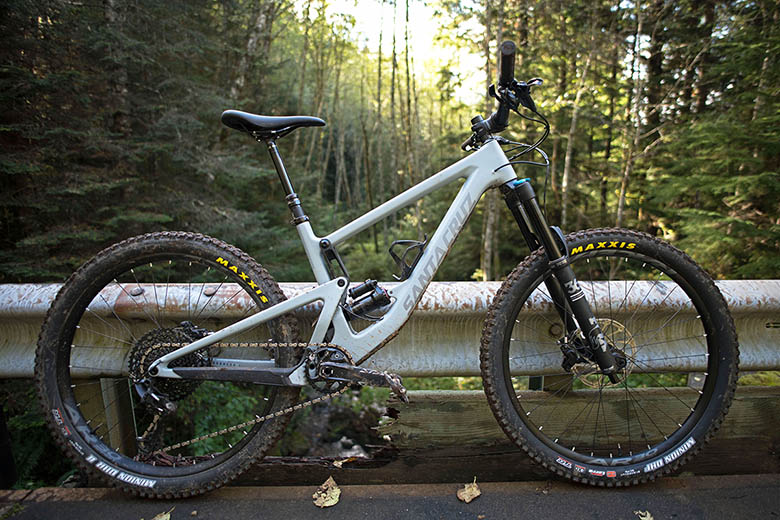


Brand reputation and prestige play a significant role in the pricing of mountain bikes. Established and reputable brands often command higher prices due to various factors that contribute to their image and perceived value among consumers.
Read More : ” How To Adjust Gear Shifter On Bike? “
Here are some key aspects that explain the impact of brand reputation on the cost of mountain bikes:
Quality and Craftsmanship:
Well-known brands have a reputation for producing high-quality bikes with attention to detail and superior craftsmanship. Consumers associate these brands with better build quality, which justifies a premium price.
Research and Development:
Established brands invest heavily in research and development to create innovative technologies and designs. This continuous improvement ensures that their bikes are equipped with the latest features and advancements, further justifying higher prices.
Proven Performance:
Reputable brands often have professional athletes and teams endorsing their products. The success and performance of these athletes on the bikes add to the prestige and desirability of the brand, which can influence pricing.
Customer Support and Warranty:
Established brands typically offer better customer support and warranty services, providing peace of mind to buyers. This level of after-sales service adds value to the purchase and can justify higher costs.
Marketing and Advertising:
Recognizable brands invest in marketing and advertising to promote their products. This exposure increases brand awareness and contributes to the perception of higher value among consumers.
Limited Edition and Premium Models:
Some well-known brands release limited edition or premium models that come with exclusive features or materials. These models are often priced higher and appeal to collectors and enthusiasts.
Global Presence:
Brands with a global presence may face additional costs associated with distribution, import/export fees, and compliance with various regulations, which can be reflected in the pricing.
It’s important to note that while brand reputation can influence the price, it’s not the sole factor. Other elements such as materials, technology, components, and features also contribute to the cost of mountain bikes.
Ultimately, consumers should consider their specific needs, preferences, and budget when choosing a mountain bike, rather than solely focusing on the brand name.
Innovative Design and Engineering
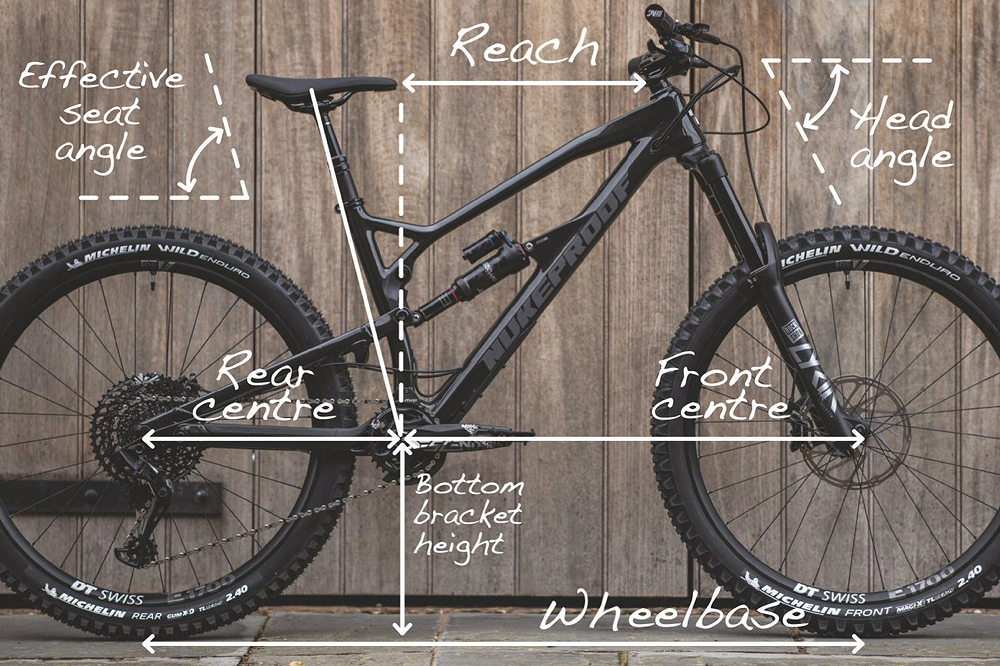


Innovative design and engineering are crucial factors contributing to the higher cost of mountain bikes.
Bike manufacturers continuously strive to develop cutting-edge designs and engineering solutions that improve performance, durability, and user experience.
Here’s a detailed explanation of how innovative design and engineering impact the pricing of mountain bikes:
Performance Optimization:
Innovative design and engineering allow bike manufacturers to optimize the frame geometry, suspension systems, and other components to enhance the bike’s performance.
This can result in improved handling, better traction, and increased efficiency, which are highly desirable features for avid cyclists.
Lightweight Materials:
Advanced engineering techniques and material selection lead to the use of high-performance, lightweight materials such as carbon fiber and titanium.
These materials offer excellent strength-to-weight ratios, resulting in lighter and more agile bikes. However, these materials are more expensive than traditional ones, contributing to the overall cost.
Customization and Specialization:
Innovative design allows for greater customization and specialization of mountain bikes. Manufacturers can create models tailored for specific riding styles or terrains, such as cross-country, downhill, or enduro.
Customization often comes with a higher price tag due to the additional engineering and development required.
Advanced Suspension Systems:
Mountain bikes equipped with sophisticated suspension systems, such as air or oil-based shocks, provide better control and comfort on rough terrains.
The research and engineering involved in creating and optimizing these systems contribute to the higher cost.
Integration of Technology:
Modern mountain bikes often integrate technology such as electronic shifting systems, advanced braking mechanisms, and smart features. These technological advancements require investment in research and development, leading to increased pricing.
Wind Tunnel Testing:
High-end mountain bike manufacturers invest in wind tunnel testing to optimize aerodynamics and reduce drag. This attention to detail can enhance performance, but it also adds to the overall cost.
Patented Technologies:
Some mountain bikes incorporate patented technologies that offer unique benefits, such as improved suspension designs or proprietary frame materials. The licensing or use of these technologies may contribute to higher costs.
Labor and Expertise:
The design and engineering of innovative mountain bikes demand skilled labor and engineering expertise. The higher labor costs and the knowledge required to develop these advanced features can influence pricing.
Innovative design and engineering are essential aspects of mountain bike development, contributing to the continuous improvement of the sport and the enjoyment of riders.
While these advancements can increase the cost of mountain bikes, they also offer significant benefits to cyclists seeking the best performance and experience on the trails.
High Demand for Performance Bikes
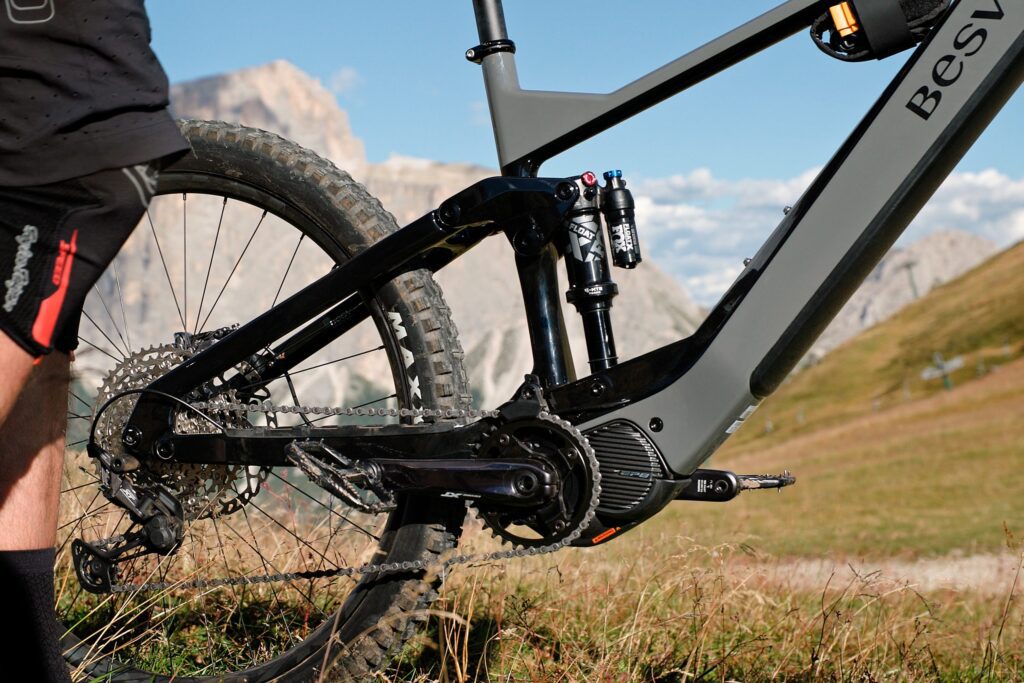


The high demand for performance bikes is a significant factor contributing to the relatively expensive price tag of mountain bikes.
Performance bikes, including mountain bikes, are designed and built to meet the needs of avid cyclists and enthusiasts seeking top-tier performance and advanced features.
Here’s a detailed explanation of why the high demand for performance bikes affects their cost:
Quality and Performance Expectations:
Cyclists who prioritize performance and durability are willing to invest in higher-quality bikes. Performance bikes are designed with top-notch components, materials, and engineering to meet the expectations of demanding riders.
Technological Advancements:
As technology advances, cyclists look for bikes that incorporate the latest innovations. Manufacturers invest in research and development to offer bikes with cutting-edge features, which can lead to higher costs.
Professional Racing and Sponsorships:
Professional cycling teams and riders often use high-performance bikes for racing and competitions.
The association of top-tier bikes with professional cyclists creates a demand among enthusiasts who want similar equipment, even if they are not competitive racers.
Limited Production and Specialization:
Some performance mountain bikes are produced in limited quantities or tailored for specific terrains or disciplines. Limited production and specialized designs can lead to higher costs due to lower economies of scale.
Brand and Prestige:
Well-established brands that have built a reputation for producing high-quality performance bikes often command higher prices. The prestige associated with certain brands contributes to their desirability and demand.
Enthusiast Market:
Enthusiast cyclists are willing to invest in bikes that offer superior performance and an exceptional riding experience. The demand from this market segment drives manufacturers to develop premium models with advanced features.
Rider Aspirations:
Many cyclists aspire to improve their skills and achieve higher performance levels. This aspiration leads them to seek bikes that can support their progress and enhance their riding abilities, driving demand for performance-oriented models.
Improved Riding Experience:
Performance bikes offer enhanced comfort, control, and efficiency, leading to a more enjoyable and rewarding riding experience. Cyclists value these benefits and are willing to pay more for bikes that deliver them.
High-Quality Components:
Performance bikes are often equipped with high-quality components, such as top-tier drivetrains, suspension systems, and brakes. The cost of sourcing and assembling these premium components contributes to the overall price.
Overall, the high demand for performance mountain bikes is driven by the desire for superior quality, advanced features, and the pursuit of an exceptional riding experience.
As a result, manufacturers invest in research, development, and premium materials to meet this demand, which influences the cost of these sought-after bikes.
Long-Term Investment in Durability



Investing in a mountain bike as a long-term durable asset is another reason why mountain bikes can be expensive.
When considering the aspect of long-term investment in durability, several factors contribute to the higher cost of mountain bikes:
High-Quality Materials:
To ensure durability and longevity, mountain bikes are constructed using high-quality materials. These materials, such as carbon fiber, aluminum, and titanium, are lightweight yet robust, capable of withstanding the rigors of off-road riding.
Advanced Manufacturing Techniques:
The manufacturing process for durable mountain bikes involves precision engineering and advanced techniques. These methods increase the cost of production but result in bikes that can endure harsh conditions and maintain structural integrity over time.
Robust Frames and Components:
Mountain bikes are equipped with durable frames and components designed to handle rough terrain and various riding conditions. These robust frames and components are more expensive to manufacture but provide increased durability and reliability.
Quality Assurance and Testing:
Reputable bike manufacturers subject their mountain bikes to rigorous quality assurance and testing procedures.
This ensures that each bike meets strict performance and safety standards, contributing to its durability but also adding to the production costs.
Extended Lifespan:
Durable mountain bikes typically have an extended lifespan compared to lower-quality models. Cyclists are willing to pay more upfront for a bike that will last for many years, reducing the need for frequent replacements and repairs.
Warranty and After-Sales Support:
Investing in a durable mountain bike often comes with the added benefit of a comprehensive warranty and reliable after-sales support.
Manufacturers back their high-quality bikes with warranty coverage to provide peace of mind to consumers, which adds to the overall cost.
Resale Value:
Durable mountain bikes tend to retain their value better than lower-quality alternatives. Cyclists who view their purchase as a long-term investment recognize that they can recoup a significant portion of the initial cost when reselling the bike in the future.
Customization Options:
Some mountain bikes offer customization options, allowing riders to tailor the bike to their specific preferences and needs. These personalized features contribute to the bike’s long-term suitability and justify the higher price tag.
Overall, viewing a mountain bike as a long-term investment in durability means prioritizing quality, craftsmanship, and performance over immediate cost savings.
While the upfront expense may be higher, the benefits of a durable and reliable bike can make it a worthwhile investment for serious cyclists seeking a lasting and enjoyable riding experience.
Value Proposition of Expensive Mountain Bikes



The value proposition of expensive mountain bikes lies in the combination of high-quality components, advanced technology, and superior performance they offer.
While these bikes may have a higher upfront cost, they provide several key benefits that justify their price:
Performance:
Expensive mountain bikes are designed and engineered for optimal performance. They offer better suspension systems, advanced gearing options, and top-notch brakes, enabling riders to tackle challenging terrains with ease and precision.
Durability:
High-quality materials and construction methods ensure that expensive mountain bikes are more durable and resistant to wear and tear.
This means they can handle rough trails and endure the stresses of off-road riding, resulting in a longer lifespan compared to cheaper alternatives.
Lightweight:
Many expensive mountain bikes utilize lightweight materials like carbon fiber, titanium, or high-end aluminum alloys. A lighter bike improves maneuverability and reduces rider fatigue, making it easier to handle technical sections of the trail.
Advanced Technology:
Expensive mountain bikes often come with advanced technology, such as electronic shifting, adjustable suspension systems, and smart features like GPS integration.
These innovations enhance the overall riding experience and offer greater control and convenience.
Customization Options:
High-end mountain bikes often offer customization options, allowing riders to fine-tune their bikes to suit their individual preferences and riding styles. This level of personalization can greatly enhance rider comfort and performance.
Brand Reputation:
Premium mountain bike brands have a strong reputation for quality and innovation. Investing in a well-known brand means riders can trust the craftsmanship and performance of the bike.
Resale Value:
Expensive mountain bikes typically hold their value well, making them a more sustainable investment over time. When it comes to selling or upgrading, riders can recoup a significant portion of their initial investment.
Prestige:
Owning an expensive mountain bike can bring a sense of prestige and exclusivity. Riders may feel a sense of pride and confidence in their equipment, which can positively impact their overall riding experience.
Expert Support:
High-end mountain bike manufacturers often provide excellent customer support and warranty coverage. Riders can rely on the brand’s expertise for technical assistance and maintenance, providing additional peace of mind.
In conclusion, the value proposition of expensive mountain bikes lies in their superior performance, durability, lightweight construction, advanced technology, and customization options.
While they may require a higher upfront investment, these bikes deliver an exceptional riding experience and can prove to be a wise and satisfying long-term investment for serious cyclists.
Additional Costs for Accessories and Upgrades
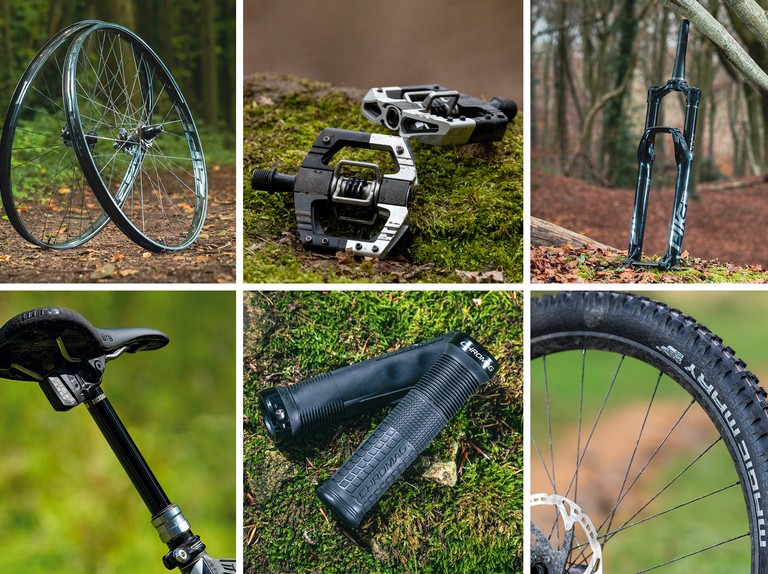


When purchasing an expensive mountain bike, riders should also consider the additional costs for accessories and potential upgrades.
While high-end bikes often come equipped with top-of-the-line components, there are still various accessories and modifications that riders may want to invest in to enhance their riding experience further.
Here are some factors to consider:
Protective Gear:
Safety should be a top priority for any cyclist. Riders should invest in quality helmets, gloves, knee pads, and other protective gear to reduce the risk of injuries while riding on challenging terrains.
Cycling Apparel:
High-performance cycling apparel can improve comfort and performance. Moisture-wicking jerseys, padded shorts, and breathable jackets are essential for long rides and adverse weather conditions.
Bike Maintenance Tools:
Regular maintenance is crucial to keep an expensive mountain bike in top shape. Riders should invest in tools and cleaning supplies to perform routine maintenance, such as cleaning the chain, adjusting gears, and checking tire pressure.
Bike Lock:
Expensive mountain bikes are attractive targets for theft. Investing in a sturdy bike lock can provide peace of mind when leaving the bike unattended.
Upgraded Components:
While premium mountain bikes already come with high-quality components, some riders may want to further customize their bike to match their specific needs and preferences.
Upgrading components such as the saddle, grips, pedals, or handlebars can significantly enhance comfort and performance.
Trail Essentials:
Depending on the type of riding and terrain, riders may need additional equipment such as a hydration system, bike lights, or a GPS device to navigate through trails effectively.
Bike Transport:
If riders plan to travel with their expensive mountain bike, they may need to invest in a quality bike rack or bike bag for secure and convenient transportation.
Riding Accessories:
Consider accessories like a bike computer for tracking performance metrics, a handlebar-mounted phone holder for navigation, or a camera mount to capture epic rides.
It’s important to budget for these additional costs when purchasing an expensive mountain bike to ensure a complete and safe riding experience.
While these expenses can add to the initial investment, they are necessary to maximize the enjoyment and performance of the bike on various trails and terrains.
Properly outfitting the bike with the right accessories and upgrades can make a significant difference in the overall riding experience, making it well worth the investment for avid mountain bikers.
Conclusion
In conclusion, the high cost of mountain bikes can be attributed to various factors. High-quality materials, advanced technology, specialized features for rough terrains, and innovative design all contribute to the premium price tag.
Additionally, the brand reputation, demand for performance bikes, and long-term investment in durability play significant roles in determining the price of these bikes.
While the initial cost may be steep, investing in an expensive mountain bike can provide riders with a top-notch riding experience, improved performance, and increased durability, making it a worthwhile investment for serious mountain biking enthusiasts.
However, it’s essential for buyers to also consider the additional costs for accessories and upgrades to fully maximize the potential of their high-end mountain bike.
Ultimately, the value proposition of expensive mountain bikes lies in the unparalleled joy and satisfaction they offer to riders who seek the thrill of conquering challenging terrains and exploring the great outdoors on two wheels.
FAQ’s
Are expensive mountain bikes worth it?
Yes, expensive mountain bikes are worth it for serious riders who seek top-notch performance, durability, and specialized features for challenging terrains.
What is special about a mountain bike?
A mountain bike is specially designed for off-road riding with features like sturdy frames, suspension systems, knobby tires, and multiple gears for handling rough terrains and steep climbs.
What is the disadvantage of mountain bike?
One disadvantage of a mountain bike is that it can be heavier and slower on smooth surfaces like roads compared to other types of bikes.
Is mountain biking an expensive hobby?
Mountain biking can be an expensive hobby due to the initial cost of the bike, gear, maintenance, and potential upgrades. However, it offers thrilling experiences and can be worth the investment for enthusiasts.
How long do mountain bikes last?
The lifespan of a mountain bike depends on factors such as usage, maintenance, and quality. With proper care, a well-made bike can last 10-20 years or more.



Welcome to Bikegenics, where passion meets performance! We are a leading online destination for all things related to mountain biking, dedicated to providing you with top-notch gear, expert advice, and an immersive community to fuel your two-wheeled adventures. With a commitment to excellence and a deep love for the sport, we strive to elevate your biking experience to new heights.
